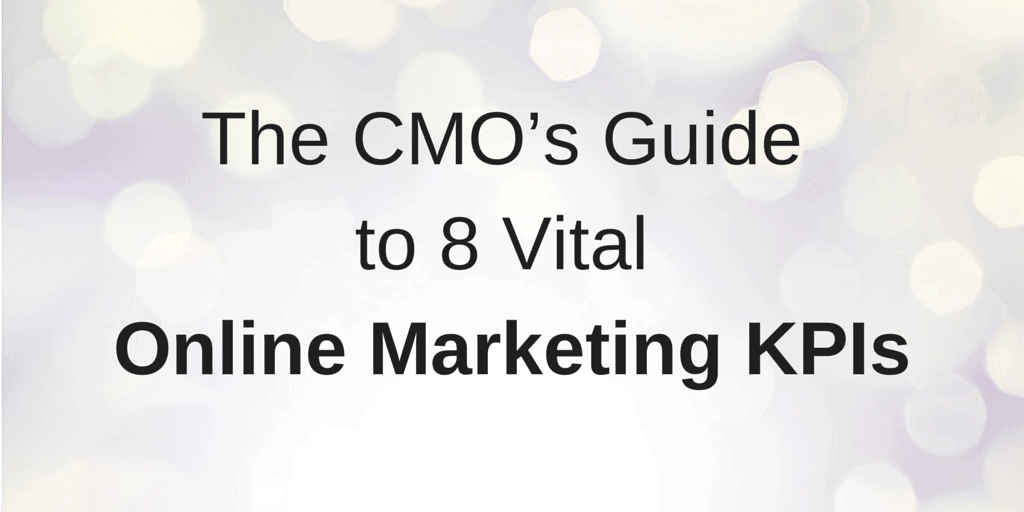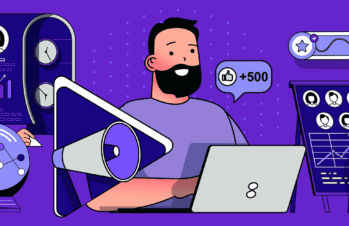General knowledge about web analytics and key performance indicators for digital marketing have made leaps and bounds since the start of online marketing, when people were only measuring the “hits” on a website. Many tools have been developed, such as Omniture and Google Analytics, which significantly simplify the process of digital marketing reporting for marketing professionals. Nowadays everyone is expected to have some knowledge and understanding of the basic web KPIs, including conversion rates and customer engagement.
Over the last few years content marketing has taken the forefront in digital marketing tactics. But most marketers are still lagging behind when it comes to the measurement of the impact and effectiveness of their content strategy. So the question remains how a marketer can better understand the effectiveness of digital marketing, aside from measuring downloads.
Here we have a comprehensive and definitive guide to KPIs and how they are used to measure your marketing initiatives.
Outreach Capacity
Geographic Location
Regardless of the circumstances and different variables, understanding the readership and their geographic location is important in understanding your audience. Based on that, budgets and resources allotments will be much more effective. Google Analytics provides in depth details of such geographic information on every page, which enables the marketers to optimize the content and landing pages for those locations.
Unique Visits
Unique Visits, the most standard and widely used measure for tracking individual views of content, helps provide a decent baseline for comparison with different content; thus identifying trends, which is the most important aspect of staying relevant in today’s fast paced globalized world.
However, not all unique visits hold the same significance; for example, unique visits to a blogs will be considerably less important than visits to a white paper, which helps in creating lead generation.
Mobile Viewership
Though it’s important to track the number of unique visits to your content, understanding the medium used to access your content is just as important – if not more so. If a significant percentage of viewers are accessing your content through mobile devices, then your website and landing pages must be optimized and designed to fit those preferences.
Engaging
Time Spent and Bounce Rates
An obvious aim which is critical for consumer engagement is captivating the reader; losing the viewer due to unfulfilled expectations is the ultimate disaster for a content strategy. A bounce rate in the higher ranges would indicate this ultimate disaster. Another measure similar in determining consumer engagement is the time spent on the page. For example, 20,000 unique visits to a 5 page white paper -with an average time spent of 12 seconds – indicates a failure to engage the reader. Both time spent and bounce rate are decent metrics for determining the level of engagement of the traffic to your content.
Click Patterns and Heat Maps
Several other great metrics are now available which also illustrate the engagement levels of your audience. CrazyEgg is an example of such a tool – it allows the user to create heat maps to see the sections of a page getting the most views. Google Analytics offers in page analytics tracking click patterns. For the optimization of your content and design, such information is critical in assessing the content’s relevance for your audience.
Page Views
Another basic but useful marketing KPI which is often overlooked has a direct correlation with the unique visits which we discussed earlier. A decent number of page views along with high unique visits, signifies a healthy audience engagement. These two KPIs, when used together, can tell you if your viewers are coming back regularly for your content and whether a certain type of consumer loyalty is being established.
Sentiment
Comments
In the digital age, all content made available on social media is subject to two way conversations. Those who try to block or restrict these discussions will witness a social backlash from consumers, who are much more empowered since the advent of new media and social media.
Users should be considered the ultimate advocates for any content, service or good, so if they are engaged and openly discussing your content, consider it a success. Though negative responses are a possible reality, most provide great insight. And positive interaction will only help improve content and strategy.
Social Media
If one takes a moment to notice, just about every single webpage out there has share options which are compatible with most of the main social media websites and applications. Making content easily shareable is crucial to all content marketing strategies.
A viewer choosing to share your content exponentially increases your reach and is direct proof of your audience engagement.
All content marketing strategies have similar goals, which is to promote your brand and increase its reach. Thus after implementing a strategy, it is just as crucial to use the marketing KPIs to ensure the success of your online marketing strategy, or to revise the strategy depending on the results.
If you are looking for help in creating a successful digital marketing strategy, fill out our online contact form today. We’d be happy to develop a strategy that will work for your company.




